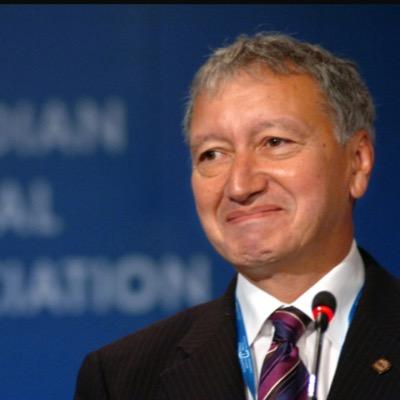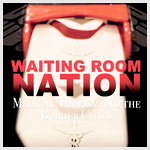
Dr. Brian Day
@DrBrianDay 
- Past President Canadian Medical Association
- Past President Arthroscopy Association of North America
- Honourary Associate Professor University of British Columbia
- 2014 Doctors of BC Don Rix Leadership Award


"People are waiting longer than they should have to, and longer than their health can afford."These are the words of Tracy Bevington. He owns EcuMedical, a referral company that helps Canadians find timely medical treatment in the U.S. The fact that his business, and others like it even exist, is proof enough that there's a medical wait time crisis in this country. Of that, there's little doubt. Now, there's a government report to back up our worst health fears....
The Canadian Medical Association (CMA) just received a report they commissioned outlining the overall economic impact of wait times in Canada. Called The Economic Cost of Wait Times in Canada, the study measured the economic impact of patients waiting in long queues to be diagnosed, see a specialist, receive treatment, followed by the time they spent recovering. The study estimated the potential economic benefits that can be achieved through successful health care policy initiatives-initiatives aimed at reducing excess wait times.
Four areas of wait time economic impact were prioritized for research: joint replacement surgery (an average of around $26,400 per patient), followed by MRIs ($20,000) and CABG (coronary artery bypass graft) surgery ($19,400), with cataract surgery yielding the lowest costs ($2,900).
There are now websites that calculate how long someone can expect to wait for certain procedures. For an MRI (magnetic resonance imaging) diagnostic scan, Ontario's target was 28 days at the beginning of April. But the average in the province is 116 days. Windsor Regional Hospital reports a 62-day wait, while Hotel-Dieu Grace Hospital reports 66 days. Medical procedures, like cataract surgery, have a provincial target of 182 days, while the realized wait times are around 120 days. According to waittimes.net (www.waittimes.net), a patient can expect to wait 51 days at Hotel-Dieu. The study says: "The wait times experienced by patients who have to wait longer than medically reasonable for treatment impose costs not only on the patients themselves, but also on the economy as a whole. Previous economic studies of wait times, which have examined the overall cost of wait lists, have had limited value in determining the best way to target public spending to reduce wait times." The costs of these "excess waits" are relevant to Canadian medical policy-makers because these are costs that could be avoided if wait times were reduced or eliminated.
The study also reports that "the cumulative economic cost of waiting for treatment across these four priority areas in 2007 was an estimated $14.8 billion. This reduction in economic activity lowered federal and provincial government revenues in 2007 by a combined $4.4 billion" according to the CMA report.
CMApresident Dr. Brian Day, said "When you delay the treatment of a patient ... the longer you delay that, the more the patient deteriorates, and ends up costing the system more. They're not earning and paying taxes, but also, they are receiving disability." "That person," he said "is going to see the doctor for physio(therapy) and pain killers and while they wait their muscles are not as strong, they're in poorer physical shape, they need more physio and treatment and much longer recovery, and sometimes there is irreversible damage."
Day says that the Euro-Canada Health Consumer Index has been analyzing the efficiency and costs of 30 European nations in terms of their health care. "They've been ranking the different systems in Europe for the last six years and in 2007 they plugged Canada into the database and used StatsCan," said Day. "As a health system, we would rank twenty-third along with Hungary and Romania, out of the thirty health systems in Europe. Yet, in value-for-money we came in the bottom. Thirty out of thirty."
"My feeling is that we're spending a lot of money for a system that's ranked fairly low. We have these massive waitlists that are adding tremendously to the cost healthcare in Canada," Day said. The Index included Canada because all of the countries considered share Canada's commitment to accessible and effective healthcare. Comparing our system to the extremely varied systems of the 29 European states, we can gain much insight into how Canada is succeeding and how it might improve in the future. The comparison showed that Canada placed in the bottom quarter of the Index, yet spends more money to achieve worse results than any other country in the lowest 25 per cent.
Mental health losses
Now that the CMA has the study in their hands, their intentions are to push policy makers to do what is necessary to eliminate wait times. "We're going to expand the study," said Day. "We just looked at four procedures, and they were cataracts, heart bypass, MRIs, hip and knee replacements, and the cost was $14.8 billion in 2007. We were not surprised when another study came out looking at mental health and the loss of productivity for mental health issues, stress leave, depression, spine, back and neck problems. Astudy came out in the Journal for Chronic Pain just this month on mental health and the cost of mental health in a year is estimated at $51 billion. These are tremendous amounts of money.
"Waiting lists cost us more," said Day.
"There are seven or eight (nations) that have universal healthcare, like Switzerland, France, Germany, and they have no wait lists. This is an economic wake-up call," he warned.
"If you look at the economic costs, there are about 300,000 Canadians that go abroad for healthcare," said Day. "Usually if you're going abroad it's for a significant procedure. If they're spending $10,000 each, you do the arithmetic, that's a lot of money lost to the Canadian economy. That's money going to another country. Look at it the other way, there are also half a million Americans who go abroad for surgery each year. They go to Russia, Thailand, Europe and India, and that's a $40 billion industry."
Day says that this is called ‘medical tourism.' "Canada could actually be a world centre for medical tourism, but we can't because we have waitlists," lamented Day. "We're denying ourselves access to this new industry, which could be [Canada's] biggest and most productive industry.
"Once we have no waitlists, then those hospitals can take in [non-citizens] , and use the revenue to generate income for the Canadian health system," he explained. "If you treat someone real quickly, the outlook for the long-term is much better. If they become chronic, those patients end up having permanent disability, (and you're) paying them a pension for the rest of their life."
Health of the border
As a border city, Windsor is right in the thick of things when it comes to long wait times and an excellent proximity to American instiutions. The increasingly cumbersome wait imes sparked Tecumseh-native Tracy Bevington into action as he looked to find a way to link Canadian patients with healthcare providers in the U.S. where there are much shorter lineups. Bevington first began working towards a solution seven years ago when he opened Bevtra Marketing, and has since taken another step in opening EcuMedical, a referral company that helps its clients skip the wait lines by sending them to the Untied States for medical treatment.
"Today," said Bevington, "you've got one and a half million people on a waiting list for surgeries and/or procedures in Canada. We know the wait times in Canada, they're published anywhere you want on the Internet. It's just long, and people are dying." When Bevington sees a study like The Economic Cost, he feels it reinforces what he's been saying for years: "People are waiting in time limits that aren't acceptable. If you've got a healthcare issue and you're waiting months-to-years, whatever it is, you can't say anything other than, ‘Whatever it started out as, it's going to get worse.' And if it's a serious condition, related to oncology or cardiology, it could mean death," he said. "People are waiting longer than they should have to, and longer than their health can afford." The Economic Cost says that an MRI can cost up to $20,000 U.S. But Bevington and EcuMedical can get a patient diagnosed within the day at a cost of $699 in Troy, MI. They've just started a new awareness campaign called Back to Work, Back to Life, which is intended to make employers aware that fronting the bill for their employees could very well save their business time and money. Injured employees would be off of compensation earlier and require fewer medications because they would not be sick as long. Other advantages include not requiring replacement workers for as long to compensate for an employee that could be unavailable to work as long as 28 months.
"The switch to the border for healthcare is new," Bevington explained. "And so is the education process that we've begun with our Back to Work, Back to Life campaign. Some employers are stepping forward, but it's like they're the rebels of their kind right now "Employers are catching on and we're hearing through the grapevine that they are very interested in what we're doing. We're not working with them yet, but when they catch on to what we can do for them and their employees, I think this will become a huge entity," said Bevington.
Barry Cullen, executive director for the UnaSource Day Surgery Centre located in Troy, MI says that Canadian clients are beginning to use his services. "We've had a few [Canadians]. About ten or so since the fall, with numerous other referrals which don't automatically become surgeries," said Cullen, a Canadian himself, who commutes from St. Clair Beach to work each day. Cullen admits that the speed at which they can serve patients, and the satisfaction levels that they receive, are tremendous.
A client can usually visit a physician within one week and are scheduled for surgery in typically one or two weeks, says Cullen. "Coming from [Windsor], it's absolutely amazing for them to be able to do," he said.
UnaSource celebrated its fourth anniversary last March. They provide 8,000 surgeries a year and Cullen says their customer feedback has been "awesome." He says that while 65 percent satisfaction is a significant achievement in a common hospital, last February they had 100 percent satisfaction. "That's just the standard we all believe we should be working at," he said.
Cullen said that it's not yet common to see employers interested in paying for their employee's medical procedures, but believes that it will catch on. "It's a newer concept, but it's something that we, through EcuMedical, would like to see promoted. It cuts down on [a patient's] need for medication like antidepressants and gets their life back to normalcy. It also allows an employer to get their business back to normal.
"The human intellect, the intellectual capital they lose when their employees are out of work, is tremendous," Cullen said. "We can't put a value on that."